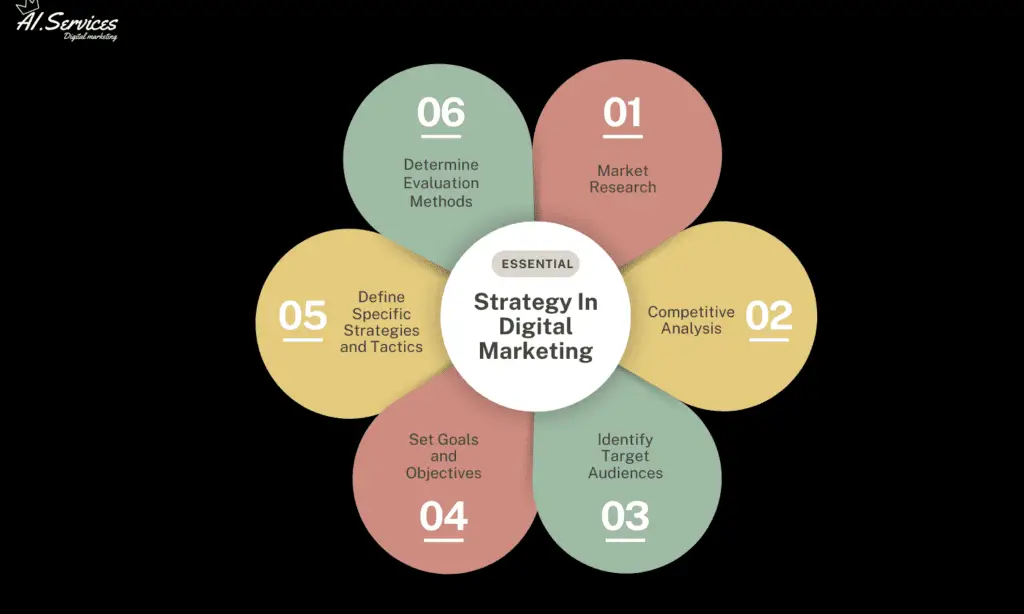Why SEO Marketing Matters for Your Business
Are you investing time and resources into your website but still not seeing the rankings you deserve? The truth is, that SEO Optimization, when done right, can transform your online presence. However, you’ll struggle to break through the competition if you’re stuck following outdated tactics or skipping essential steps.
In this article, I’ll unlock the secrets of SEO optimization and share 7 benchmarks that will not only Skyrocket your search rankings but also drive high-quality traffic and conversions.
1. Keyword Research: The Foundation of SEO Success
Before you optimize any aspect of your website, it’s crucial to target the right keywords. Many businesses mistakenly focus on broad, highly competitive terms that often lead to wasted effort and poor results.
Key Steps for Effective Keyword Research:
- Focus on Long-Tail Keywords: Instead of targeting broad terms like “shoes,” opt for more specific phrases, such as “women’s running shoes for flat feet.” These carry less competition and higher buyer intent.
- Use Keyword Research Tools: Leverage tools like Google Keyword Planner, Ubersuggest, and SEMrush to find valuable, low-competition keywords that align with your business goals.
- Prioritize Buyer Intent: Long-tail keywords are often associated with purchase intent, leading to higher conversion rates
When choosing keywords, don’t just focus on high search volume. It’s important to understand search intent—the intention of someone searching that term. A keyword with fewer searches but clear intent (like someone ready to make a purchase) is more valuable. For example, instead of targeting a broad term like “laptops,” try “best affordable gaming laptops under $1000.” This attracts people closer to making a decision, boosting the chances of conversion.
2. On-Page SEO: Optimizing for Search Engines and Users
On-page SEO is where you directly communicate with search engines, telling them what your content is about. Proper optimization of these elements ensures your content ranks higher and resonates with users.
Essentials of On-Page SEO:
- Keyword Placement: Ensure your target keywords appear in the title tag, meta descriptions, headers, and naturally throughout your content.
- Optimize Page Speed: Site speed is a ranking factor, so use tools like Google PageSpeed Insights to identify areas where you can improve loading times.
- Mobile-Friendliness: More users search via mobile, so your website must be responsive across devices.
- Alt Text for Images: Use descriptive alt text for images to boost rankings in image searches and improve accessibility.
A fast, mobile-friendly website that incorporates strategic keyword placement will not only rank higher in search engines but also keep users engaged longer. Since more people in Nigeria and globally access the internet via smartphones, a responsive and quick-loading site enhances user experience, reducing bounce rates. When visitors can navigate easily and find relevant information quickly, they are more likely to stay on your page, interact with your content, and potentially convert into customers. By focusing on both speed and targeted keywords, you make it easier for search engines to recognize your site’s value, improving rankings and user satisfaction.
3. Content Quality: Valuable Content Still Reigns Supreme
No matter how well-optimized your site is, content quality remains the most critical factor for SEO success. But what exactly constitutes high-quality content?
Creating High-Quality Content:
- Answer User Questions: Solve problems and provide answers to questions your audience is actively searching for. Use tools like AnswerThePublic to uncover what your audience wants to know.
- Create Long-Form Content: Aim for content that is 1,500 words or more. Search engines favor longer, in-depth pieces that provide comprehensive information.
- Use Clear Headings and Subheadings: Structure your content with headings that break down information into digestible sections.
- Incorporate Relevant Keywords Naturally: Avoid keyword stuffing. Use semantically related terms to keep the content natural yet SEO-optimized.
Take your best long-form content and turn it into different formats, like videos, infographics, or podcasts. This allows you to reach more people, catering to different preferences for consuming content. For example, you could turn a blog post into a short explainer video or an infographic that visually summarizes the key points. Podcasts are another great way to dive deeper into the topic for those who prefer audio content. By repurposing content, you maximize the value of your original work while appealing to a broader audience across various platforms.
4. Link Building: Quality Over Quantity
Link building is a crucial factor for increasing your domain authority and improving search engine rankings. But quality links are far more valuable than a high quantity of low-authority backlinks.
Strategies for Effective Link Building:
- Earn High-Quality Backlinks: Focus on securing backlinks from authoritative sites like industry blogs, news websites, or influencers.
- Guest Blogging: Offer valuable content to other websites in exchange for a backlink to your site.
- Internal Linking: Don’t overlook linking your own content. Use internal links to help users navigate through related articles, which also keeps them on your site longer.
When you avoid backlinks buying or engaging in shady link-building schemes. Search engines, especially Google, are very strict about unnatural link practices. If search engines detect that you’re using paid or spammy links to manipulate rankings, your website can face penalties, which will drop your rankings significantly. Worse, your site could be completely de-indexed from search results, meaning it won’t show up on Google at all.
Instead, focus on earning high-quality links naturally by creating valuable content and building genuine relationships with reputable sites. Quality over quantity is key—just a few strong, relevant backlinks are far more effective than hundreds of low-quality ones.
5. User Experience (UX): Google Loves Happy Visitors
User experience (UX) is now one of the most critical ranking factors. A seamless, user-friendly website experience not only pleases visitors but also keeps them engaged, reducing bounce rates and improving dwell time—both of which positively affect rankings.
Enhancing UX for Better SEO:
- Improve Site Speed: Optimize images, use a CDN, and minimize CSS/JavaScript files to boost page load speeds.
- Simplify Site Navigation: A clear, well-structured layout makes it easier for users to find what they’re looking for, keeping them on your site longer.
- Mobile Optimization: Ensure your site is responsive. Use Google’s Mobile-Friendly Test to ensure your pages perform well on mobile devices.
A well-designed user experience (UX) keeps visitors on your site longer, leading to higher engagement and lower bounce rates. When users spend more time on your pages, it signals to search engines that your content is valuable and relevant, which can boost your search rankings. On the flip side, if visitors leave quickly (high bounce rates), it tells search engines that your site might not be offering what users are looking for. So, focus on creating a fast, easy-to-navigate site that provides useful content to keep visitors engaged and improve your rankings.
6. Engagement: Boosting Interaction and Dwell Time
User engagement is a strong signal to search engines that your content is valuable. High dwell time and low bounce rates are indicators of engaging content that ranks well in search engines.
Boosting Engagement on Your Website:
- Use Strong CTAs: Encourage users to comment, share, or take action after reading your content. This not only improves engagement but also guides visitors through your sales funnel.
- Add Interactive Elements: Quizzes, polls, and interactive infographics increase user engagement and provide a more immersive experience.
- Implement Internal Linking: Direct visitors to related articles or resources to keep them exploring your site for longer.
For your Website to display on Google SERP, pay close attention to bounce rates and dwell time in Google Analytics. Bounce rate shows how quickly visitors leave your site after viewing just one page, while dwell time reflects how long they stay engaged.
A high bounce rate signals that visitors aren’t getting value, while a low dwell time means they’re not spending enough time on your content. Both metrics can hurt your SEO performance. By enhancing these areas, you can reduce bounce rates, increase dwell time, and, as a result, potentially improve your rankings.
7. Monitor, Analyze, and Adjust: SEO Is an Ongoing Process
The world of SEO is constantly changing, with algorithm updates and evolving best practices. Regular monitoring ensures you stay ahead of the competition and adjust your strategy when necessary.
Continuous SEO Monitoring:
- Track Performance: Use tools like Google Analytics, SEMrush, and Ahrefs to monitor your rankings, traffic, and conversion rates.
- Identify Issues: Check for pages with high bounce rates or low rankings and make adjustments as needed.
- Stay Updated on Algorithm Changes: SEO algorithms change frequently, and staying informed is essential for maintaining high rankings.
Perform regular SEO audits to keep your website in top shape. An audit helps you spot issues like broken links, slow page speeds, or missing keywords that could hurt your rankings. It also uncovers opportunities to improve, such as optimizing content or enhancing mobile performance.
By checking key metrics—like traffic, bounce rates, and keyword rankings—you’ll stay ahead of competitors and adapt to algorithm changes. Aim to audit your site at least every 3-6 months to ensure everything is running smoothly and to find new ways to boost your SEO efforts. Regular audits help you maintain strong rankings and drive continuous improvement.
Conclusion: Take Action and Skyrocket Your Rankings
SEO doesn’t have to be overwhelming or complicated. By following these 7 benchmarks, including keyword research, on-page optimization, content quality, link building, UX, engagement strategies, and continuous monitoring, you’ll position your website to dominate search engine rankings.
Ready to take your SEO strategy to the next level? Implement these steps today and watch as your rankings skyrocket, bringing you more traffic, engagement, and conversions.




